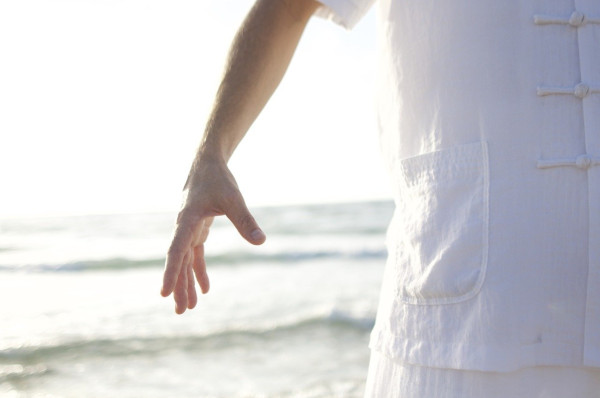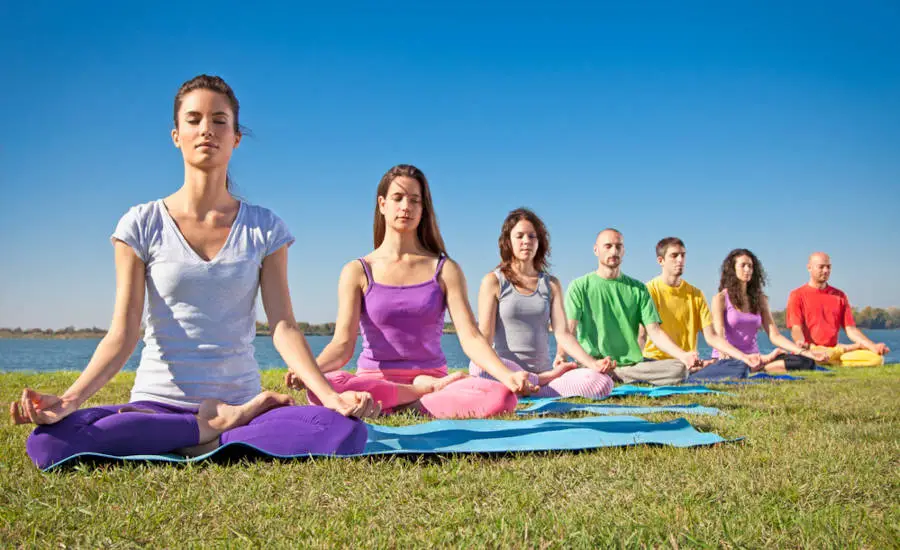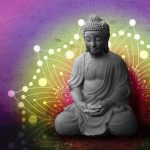Meditation is a popular and relatively simple technique to bring your inner mind towards a peaceful state. Many people underestimate the difficulty of bringing your mind into a peaceful state, but many beginners are often surprised by how difficult the simplest aspects of meditation such as sitting in silence while doing nothing with your eyes closed can be.
Meditation, albeit seemingly simple at first, can be quite tough to comprehend, and it’s actually not as simple as maintaining your breathing pattern, there are several techniques that you must first comprehend to successfully “open” your mind and achieve the trance state.
Below, we will discuss some of the most popular types of meditation in the US; while there are many different ways to do meditation, all of them have the same purposes: finding your inner peace, balancing your mind, removing your anxiety, and increasing your resilience, among other benefits.
1.Mindfulness Meditation
The term “mindfulness” refers to our ability to perceive, be aware, and present to our surroundings.
Mindfulness meditation is a practice where you train your mind to be at ease while noticing and perceiving everything to train your mindfulness, which can help you think more carefully and help clear your mind. Mindfulness meditation can help us release our negative thoughts while keeping our minds and bodies calm.
Here is how you can perform mindfulness meditation:
- First, you need to find a suitable place where you can easily concentrate. It can be anywhere: a room, a rooftop, your backyard, etc.
- You can sit anywhere you want (as long as you can relax), you can use a chair, a meditation pillow, or on the grass.
- Attune your senses and try to relax your body. Then straighten your body (not stiffen), this posture will help your breathing while you can ease your head and shoulder.
- Feel the air you breathe into your body and try to exhale slowly. Keep doing it several times until your mind calms down.
- Observe all your senses, you can open your eyes and start looking at any object, smell any scent, and listen to surrounding sounds. Be aware of your surroundings, as well as what’s going on in your mind. Observe everything until they disappear naturally.
- For beginners, you can start for 10-15 minutes. As you get more experienced, you can increase your meditating time to reflect on your feelings and surroundings more.
Related reading: Mindfulness Meditation: What is, Ways to Practice, Benefits. – Opens in new tab
2. Transcendental Meditation
Transcendental meditation aims to ease your mind and calm your body and soul, similar to many other meditation methods. Unlike mindfulness, where we focus on our surroundings and sensations, in transcendental meditation, we focus on mantra or chanting.
Thus, transcendental meditation is a meditation practice where you sit down (in a comfortable position) while closing your eyes and uttering the mantra that is given by your teacher, in your mind.
Transcendental meditation started as early as 1950. At this time meditation was only popular in India, but Maharishi Mahesh Yogi brought this meditation technique into the Western world and popularized it.
In 2008 Maharishi Mahesh Yogi passed away, but transcendental meditation is already well-received globally. Up to 5 million members exist around the world, which is still growing at the moment.
There are over 1000 mantras that are used in transcendental meditation, but you will be given the specific mantras that are useful to you. Only a certified trainer can evaluate and give you the most suitable mantras that you should use when meditating.
Further Reading: Transcendental Meditation – All You Need to Know – Opens in new tab.
3. Chakra Meditation
As the name “Chakra meditation” suggests, this meditation technique focuses on the body’s core chakras, the centers of energy in Hinduism and Buddhism.
Although the number may vary depending on who you ask, most meditation experts agree that there are 7 chakra points that are located in our body:
The Root Chakra (Muladhara)
The root chakra, or Muladhara in Sanskrit, is located at the base of the spine. It governs the way we connect to the outside world and oversees our basic needs for stability, food, and shelter. It is associated with the color red and the earth element.
The Sacral Chakra (Svadhisthana)
Svadhisthana, the sacral chakra, is located below the navel. This chakra is intimately linked to our sexuality and creative process. Its energy encourages us to explore the world and use our creativity to find artistic outlets and adapt to change. Its base color is orange and its element is water.
The Solar Plexus Chakra (Manipura)
The Sanskrit name Manipura means City of Jewels. This chakra is located between the rib cage and the navel. It is believed to be a source of personal agency and self-esteem in that it translates our desires into action. Physically, it helps regulate digestion. Its color is yellow and it is associated with the fire element.
The Heart Chakra (Anahata)
Anahata, the heart chakra, means “unstuck” in Sanskrit. This chakra lies in the middle of your cardiovascular system and is connected to organs such as the heart and lungs. The heart chakra is associated with a person’s emotional profile, such as their natural generosity and ability to appreciate compassion and connectedness. Its color is green and its element is air.

The Throat Chakra (Vishuddha)
Vishuddha, the throat chakra, governs the neck, mouth, tongue, and other physical elements of the throat area. It regulates how we communicate and allows us to express ourselves skillfully. Confidence and understanding are related to this chakra. Its color is blue and its element is ether.
The Third Eye Chakra (Ajna)
Ajna is located behind the forehead, at the level of the space between the eyebrows. The “third eye” chakra governs intuition and insight, especially at spiritual levels. A receptive and balanced Ajna chakra empowers us to notice interconnections that exist in this world and beyond. Its color is indigo and its element is light.
The Crown Chakra (Sahasrara)
Sahasrara, the crown chakra, is situated at the top of the head. Also known as the “thousand petal lotus” chakra, it is considered to be the most spiritual of the core chakras as it governs spiritual consciousness and the potential for awakening to the dimension of the divine. Its color is purple (or white) and it embodies the spirit.
Further reading: Guide To Chakra Meditation: Benefits, How To Do, Script – Opens in new tab
4. Zen Meditation
Zen meditation is a meditation technique used in Zen Buddhism and is believed to be invented in the 12th century when Zen Buddhism gained popularity in Japan.
Zen meditation is one of the easiest meditation techniques to perform: You only need to sit down (in the lotus position) while you close your eyes and control your mind. By actively monitoring your own mind, you may find a different perspective (enlightenment).
Although it sounds similar to mindfulness meditation works, Zen meditation approaches different angles of how you perceive your mind. Mindfulness practices how you can hold and observe something in your mind, while Zen meditation gives up or dismisses what’s in your mind. In other words, Zen meditation is about “thinking about not thinking”.
Further reading: All You Need To Know About Zen Meditation – What Is, Benefits, How To Do – Opens in new tab

5. Breathing Meditation
Unlike many other meditation practices, breathing meditation is the most common meditation practice. Breathing meditation requires you to only focus on your breathing as a way to clear your mind and ease your thoughts.
Considered the simplest meditation technique, these steps will help you to set towards a good breathing meditation:
- Breath as comfortably as possible
- Try to inhale and exhale more slowly, try not to do it excessively. Simply allowing it to flow slowly makes your body relax while it eases the burden on your mind.
- Inhale, exhale and track every single breath
- By putting your focus on your breathing you will keep your mind from wandering. You may find it hard at first, but practice makes perfect.
- Listen to your body sensations
- As you relax your body and breathe in and out, explore your body sensations, eventually, you will gain more sense and presence inside your body.
- Find a spot on your body to focus on
- After you are aware of how your body reacts, find a certain spot on your body you can use as a center of your focus.
- Allow awareness to spread from one focal point to the entire body
- After you’ve selected a focus, you can now start moving your awareness towards another part of your body.
- Fill Your breath with good energy and let it flow
- Let your energy flow in you. By channeling it, each of your breaths will give you a wave of awareness and positive energy.
Further reading: How to Focus on the Breath in Six Easy Steps. – Opens in new tab
6. Vipassana Meditation
Vipassana is another ancient meditation technique that is now very popular all over the world, including in the US.
Many believe that Vipassana meditation was practiced by Siddharta Gautama, the Buddha himself, and is featured in the Satipatthana Sutta.
Vipassana was popularized in the modern era by S.N. Goenka, a Myanmar-born Indian meditation teacher. Goenka learned it from Sayagi U Ba Khin, who is a renowned Vipassana teacher. This meditation technique has been gaining popularity all over the world since 1969.
There are several types of Vipassana meditation :
1. Kayanupassana (Continuous Observation of the body)
In this method, we focus solely on one’s body, analyzing everything that relates to the body: breathing, posture adjustment, and so on.
2. Vedananupassana (Continuous Observation of Feelings)
This method solely focuses and reflects on the continuous flux of feelings that is happening inside our minds. Understanding it will easily sort out every negative feeling and strengthen the positive feeling.
3. Cittanupassana (Continuous Observation of the Mind)
This method focuses only on your own mind. By observing and understanding each own perspective of the mind, will help you free the mind from harmful and bad thoughts.
4. Dhammanupassana (Continuous Observation of Mental Processes)
The most abstract training out of these four. Being mindful of the mental process will easily control the state of your mind. When you control each mental process you can observe how your mind processes each situation, allowing you to regulate and neutralize any bad thoughts.
Further Reading: Vipassana Meditation – What is, Benefits, Types, How to Do – Opens in new tab.
7. Mantra meditation
As the name suggests, in mantra meditation, the practitioner utters a repetitive mantra (words), and the meditation itself is centered on finding balance in the mind by focusing on the repetition of sound.
We can use the mantra in various different ways. You can use a mantra by chanting, singing, or even humming it. There are many ways that you can learn your mantra and use it, but all of them have the same principle; all you need is to repeat the mantra all over in order to consolidate your mind and find inner balance.
Here is how you do it:
- Try to prepare the place and tools to make you comfortable during the meditation. You can prepare a scented candle, a good cushion, a comfortable room, and so on
- Relax your body and try to get your meditation form
- Take deep breaths and try to focus until your body starts to relax and your mind calms down.
- Start Chanting your mantra (you can do it in anyways, either out loud or inside your mind).
- Set your meditation time
- Take another deep breath before ending your meditation.
Mantra meditation is believed to be very effective in relieving anxiety and depression and improving your overall mental state. Also, a study has suggested that enchanting the “Aum” (read: “Om”) mantra can stimulate the nervous system in a positive manner.
Further Reading: Mantra Meditation – What is, Benefits, How to Do – Opens in new tab.

8. Body Scan Meditation
Body scan meditation is one of the meditation practices that focus on the physical sensation of your body. The purpose of the meditation is to allow you to scan and be aware of your body’s system. By doing so, you will develop body awareness and know that your emotional stress and mind breakdown can also affect your physical state.
Body scan meditation can produce the following benefits:
- Regulating your stress level: Body scan meditation can help you train your mind to adapt and easily respond to your stress level. Body scan meditation focuses on the source of stress rather than reflective thinking.
- Clearing your mind: If you often have a problem concentrating and your mind tends to float away, body scan meditation can help you clear the doubts in your mind and stay focused.
Further Reading: Everything You Need To Know About Body Scan Meditation – Opens in new tab.
9. Walking Meditation
Walking meditation is one of the few meditation techniques that allow you to meditate while in motion. As we know, most meditation techniques typically require you to be in a static position (sitting), but here we can perform meditation by walking.
Unlike a usual stroll, walking meditation requires you to walk at a slower pace. Also, you need to coordinate your breathing with your steps to build up the rhythms.
Here are the steps how we can do walking meditation:
- Pick a suitable location. Try to find a place where you can relax and have at least 15 paces back and forth.
- You now can start your steps slowly, and after completing your 15 steps you can take a deep breath (as long as you need) before you walk back.
- You can choose any walking pace as long as it’s slow enough, but make sure you feel every step that you take.
- You should immerse yourself in every natural sensation that happens during your walk, including your body’s reaction.
- Your posture is important, you need to stand upright while relaxed at the same time. Try to put your hands hanging freely at your side or you can clasp them at the front or behind.
Related reading: Walking Meditation – What is, How to do, Benefits – Opens in new tab
10. Qigong Meditation
Qigong (or Chi Kung) is an ancient Chinese meditation and healing technique that combines controlled breathing with gentle movement (if you are familiar with Taichi, then it’s quite similar).

The term Qigong consists of two words: Qi, meaning “vital energy” or “life force”, and Gong, which means “mastery”. Thus, Qigong meditation is focused on mastering your own energy.
Unlike other types of meditation, Qigong meditation isn’t performed by sitting but instead is performed by repeating gentle and coordinated movements while maintaining breathwork. The gentle Qigong movements will also promote muscle strength, body balance, flexibility, and proprioception (awareness of one’s body position).
However, we can also perform Qigong meditation passively by sitting, but although the body is still, the mind must actively work to move and cultivate Qi energy throughout the body. It’s also possible to perform the Qigong meditation with the assistance of a Qi therapist who will provide the emitted Qi to promote healing.
To perform Qigong meditation, you’ll need to look for the nearest Qigong practitioner in your location and learn the method.
Related reading: Freeing Your Mind: 5 Cultural and Religious Misconceptions about Meditation – Opens in new tab
End Words
There are various different techniques and methods you can use for meditation, each with its own benefits and purposes.
So, don’t be afraid to experiment and try different meditation methods, it may take some trial and error before you find one that is most suitable for your needs. It’s important to maintain regular meditation training without allowing it to become a chore so you can keep it enjoyable and sustainable.
If one form of meditation isn’t comfortable enough for you or you feel that it doesn’t help your current needs, whether you are looking to reduce stress or concentrate better, it’s perfectly okay to try a new one.
Video Summary
Do you want to learn more about Meditation? Check out our recommendations at “Meditation Bookshelf” and many free resources at our “Free MeditationLibrary“ – Opens in new tab
Stay in Touch
 Join our newsletter by using the forms on this website or click here!
Join our newsletter by using the forms on this website or click here! Follow us on Google News
Follow us on Google News Follow us on Facebook
Follow us on Facebook
Featured image from Depositphotos







